DPRK defense potential in Google Earth images
26 July published a “Military Review” Republic of Korea military facilities on Google earth satellite imagerywhich provided a brief overview of the military potential of the Republic of Korea and satellite photographs of South Korean military facilities provided by Google earth. Pictures of the territory of the DPRK are about the same low resolution, as pictures of objects in South Korea. In this connection, unfortunately, it is almost impossible to estimate the potential of the North Korean Ground Forces using Google earth.
The regular armed forces of the Democratic People's Republic of Korea (Korean People’s Army), according to data published in the West, number up to 1,2 million people (the fifth largest army in the world). At the same time, the population of the DPRK is 24,7 million people. According to estimates by the Stockholm Peace Research Institute (SIPRI), North Korea’s military budget is approximately 16% of GDP - $ 10,1 billion. However, it should be understood that due to the DPRK’s closeness, this is a very approximate figure, earlier North Korean officials stated that the country spends less than $ 1 billion on defense. The strength of the Korean People’s Army (KPA) is estimated at more than 1 million. As part of the ground forces there are: 20 corps (12 infantry, 4 mechanized, tank, 2 artillery, defense of the capital), 27 infantry divisions, 15 tank and 14 mechanized brigades, brigade OTR, 21 artillery brigade, 9 brigades MLRS, regiment TR. The KPA has about 3500 medium and main battle tanks and over 500 light tanks, more than 2500 armored personnel carriers, more than 10000 artillery pieces (including about 4500 self-propelled guns), more than 7500 mortars, over 2500 MLRS, about 2000 ATGM systems, and about 100 mobile TR and OTR launchers. The troops have more than 10000 MANPADS and 10000 anti-aircraft guns and fourteen 14,5-mm machine-gun mounts, about a third of them in stationary positions. The tank fleet is mainly Soviet tanks: T-54, T-55 and T-62, as well as their Chinese counterparts. Light - PT-76 and Chinese Type 62 and Type 63.
North Korea has achieved some success in tank building, on the basis of the Soviet medium tank T-62, the Cheonmakho tank was created, and on the basis of the T-72 tank, the Pokpunhoho was created. In total, in the DPRK, taking into account the МХNUMX and М1975 light tanks, about 1985 tanks were built. However, according to some sources, there are still T-1000-34 and EC-85 in a number of fortified areas in the DPRK. The production of ATGM in the DPRK began in the second half of the 2's. The first anti-tank missile complexes of North Korean production were controlled by wire "Baby". In the 70-x in the anti-tank units began to arrive ATGM "Fagot". Despite the general technological backwardness of the North Korean industry, considerable success was achieved in the development and production of individual, relatively modern, types of weapons and military equipment. In general, the North Korean army is equipped with samples created in 80-50-s. However, given the size, unpretentiousness and high ideological motivation of the personnel, the KPA, acting in defense, is capable of inflicting unacceptable losses on any aggressor.
The military doctrine of the DPRK is based on active defense. Most of the regular North Korean Ground Forces units are located south of the Pyongyang-Wonsan line. The southern regions of North Korea over 250 km along the demarcation line along 38 parallel lines were turned into a continuous zone of fortified areas with numerous long-range firing points, engineering barriers, minefields, capital multi-layer shelters and tunnels several kilometers long. These tunnels are assumed to be dominated by air aviation the enemy carry out the transfer of reserves and the supply of supplies. The mountainous terrain of the greater part of the territory of the DPRK contributes to the creation of lines of impenetrable long-term defense. The coastal air defense is carried out by seven army corps and coastal missile and artillery units fleet and aviation commands of the Air Force and Air Defense, part of the forces of the corps of border troops. In the "rear" areas of the DPRK, two mechanized and tank corps of the operational reserve are deployed.
The main military argument of the DPRK is its nuclear weapon. Practical work on the creation of the North Korean atomic bomb began in the 70-s. Contrary to the myths prevalent in the Western media, China and Russia did not directly contribute to the North Korean nuclear weapons program. The reactors on which plutonium was produced in the DPRK are the local version of the British and French reactors, and the production line for reprocessing of irradiated nuclear fuel and the separation of plutonium is based on Belgian technical documentation. North Korean specialists gained access to these Western projects with the DPRK joining the IAEA. After the multilateral negotiations involving China, Russia, the United States, South Korea and Japan ended in failure in 2003, the DPRK leadership ordered the conversion of accumulated stocks of fissile materials into nuclear warheads. The failure of negotiations on the North Korean nuclear issue was promoted by the US aggression against Iraq. North Korea’s then-leader Kim Jong Il was well aware that if Iraq had nuclear weapons, then the United States would most likely not risk attacking this country, and perceived the demands of the United States and Japan as a desire to weaken their country's defense capability.
The most famous North Korean nuclear facility is the Yongbyon nuclear research center. Its construction with Soviet technical support began in 1965. Originally it was a purely research scientific object. In the future, the scale of the research and work carried out here to obtain and accumulate fissile materials were increased many times over. After North Korea withdrew from the NPT in 1993, refused to pay for the construction of nuclear power plants with light-water reactors in the Sinpo area and did not allow the IAEA inspectors to go to its two nuclear facilities, Russia ceased cooperation with the DPRK in the nuclear field.
In order to comply with the secrecy regime, this nuclear complex in the DPRK was called the “Yongbyon Furniture Factory”. Although you cannot deny the North Korean state security officers a sense of humor, to hide a cumbersome complex with concrete domes of reactors, coolers and high-altitude pipes from space reconnaissance means such conspiracy will not help. However, this is not the only North Korean object. US and South Korean intelligence agencies indicate at least a dozen more suspicious structures where research can be conducted on the North Korean nuclear program.
October 3 2006, North Korea became the first country that, not in the official "nuclear club", warned in advance about the upcoming nuclear testing. The need to create and test their own nuclear weapons was justified by the threat of US aggression and the imposition of economic sanctions aimed at strangling the DPRK. At the same time, an official statement read on Central North Korean Television (KCTV) noted: “The DPRK is not going to use nuclear weapons first, but on the contrary, will continue to make efforts to ensure the nuclear-free status of the Korean Peninsula and take steps towards nuclear disarmament and a total ban on nuclear weapons ".
An underground nuclear test was performed on 9 on October 2006 of the year in a mountainous area at the Phungheri test site in Yangando province, 180 kilometers from the border with Russia. According to seismic stations, the power of the explosion did not exceed 0,5 kt. The DPRK claimed that it was a test of a compact charge of low power. However, there are reasonable doubts about the ability of the North Korean nuclear industry to create high-tech compact charges. Some experts believe that the first officially declared North Korean nuclear test was a bluff, and in reality a large amount of conventional explosives was eroded under the ground. At the same time, the possibility of an unsuccessful nuclear test is not excluded, which has repeatedly happened in other countries. Due to the improper functioning of automation, the use of plutonium of insufficient purification, or in the case of errors during the design or assembly, a nuclear explosive device could not produce the entire planned energy release. Nuclear specialists designate such an explosion with an incomplete cycle of division by the term "pop." But, despite the uncertainty about the nature of the test explosion, most experts in the field of nuclear weapons no longer doubted the DPRK’s ability to create nuclear charges. According to the US intelligence services, in the middle of 2000's in North Korea, there were enough plutonium stocks to make 10 nuclear charges. After the first officially declared underground test nuclear explosion, two more underground tests were conducted at the Phunheri test site in the same place: May 25, 2009, and February 2, 2013. In the middle of 2015, the American reconnaissance satellites recorded the construction of another tunnel in Phungheri. Almost at the same time, representatives of South Korea stated that they have information about the preparatory work being carried out in the DPRK to test thermonuclear weapons. Confirming this, 10 December 2015, Kim Jong-un, said that the DPRK had a hydrogen bomb. However, many considered this statement to be another North Korean bluff and nuclear blackmail. However, their doubts were dispelled by 6 on January 2016, when an earthquake with a magnitude of 5,1 points was recorded by seismic sensors on the territory of the DPRK, experts associated it with another nuclear test. According to the seismogram, its power is approximately estimated at 22 kt, but it is not clear what type of charge was tested. There is reason to believe that this was not a thermonuclear, but only an enhanced (boosted) tritium primary nuclear charge. Subsequently, over the water area of the Sea of Japan, isotopes characteristic of this type of bomb were detected in air samples taken by American reconnaissance aircraft.
A report recently published in the United States states that to date, the DPRK has accumulated enough plutonium to make 30 nuclear charges. Apparently, Pyongyang will not stop at what has been achieved and intends to substantially expand its nuclear program in the future. If the pace of plutonium production in the DPRK remains at its current level, after 2020, the North Korean military will have about 100 nuclear warheads at its disposal. Even if American experts once again made a mistake and overestimated the number of North Korean nuclear warheads by half, half of this amount would be enough to completely destroy the industrial and defense potential of the Republic of Korea. Given the modest technological capabilities, the DPRK faces a serious problem of developing means of delivering nuclear warheads. The easiest way is to create nuclear land mines transported on cars or tracked vehicles.
Nuclear bombs, installed on its own territory, will pose a serious threat to the advancing American and South Korean forces in the event of an attack on North Korea. But if they are undermined, the neighborhoods within a radius of tens of kilometers will be subjected to prolonged radiation contamination, that is, the use of nuclear land mines in a fairly limited area is possible only in case of an inevitable military defeat, when the North Korean leadership will have nothing to lose. The development and creation of sufficiently compact sabotage charges by analogy with the Soviet and American “nuclear satchels” in the DPRK seems unlikely.
The most promising means of delivery are ballistic missiles. The creation of long-range samples intensified after the decision of the DPRK leadership on the practical implementation of its own nuclear weapons program. The lineage of many North Korean ballistic missiles is conducted from the Soviet OTRK 9K72 "Elbrus" with a liquid rocket 8К14 (Р-17). This complex is known in the West as SCUD. However, these missile systems from the USSR to North Korea were never delivered, possibly out of concern that the DPRK might share them with China. At the end of 70-x several complexes with a package of technical documentation were obtained from Egypt. Taking into account the fact that with the Soviet aid in the DPRK, by the middle of the 80-s, many metallurgical, chemical, and instrument-making enterprises were built, and the Р-17 missiles created using the 50-s technologies had a simple and understandable design, with their copying into North Korea had no problems.
North Korean ballistic missiles began to be massively put into service in the middle of the 80-s and were subjected to sequential modernization in order to increase the flight range. In 2010, at a military parade, a missile system with the Musudan BRSD was shown. The exact characteristics of this mobile missile system are unknown, but some experts believe that it was created on the basis of the Soviet R-27 SLBM adopted in service in the USSR at the end of the 60's. According to unconfirmed information, experts from the Makeyev Design Bureau took part in the creation of this North Korean ballistic missile. The Americans believe that the Musudan launch range reaches 3000-4000 km, while in their area of destruction there are American military installations on the Pacific island of Guam. In the summer of 2013, an American reconnaissance satellite discovered two launchers with MRBDs, on the east coast of the country at the Tonkhe missile test site in Hvade-gun.
As part of the implementation of the North Korean nuclear missile program, a line of missiles with a launch range of 1000-6000 km has been created. North Korean ICBMs are combinations of both proven missile systems and newly created stages. On the basis of ballistic missiles created carrier rockets "Ehnha-2" and "Eunha-3". The Ynha-3 launch vehicle, launched from SoHe’s 12 cosmodrome on December 2012, launched an artificial satellite, Kwanmenson-3, into the orbit, making North Korea the 10-th space power. The launch of the spacecraft not only showed the ability of the DPRK to bring satellites into near-earth orbit, but also to deliver, if necessary, nuclear warheads over thousands of kilometers.
The Sohe space center was built on the west coast of the DPRK in the province of Pyongan Pukto near the northern border with the People's Republic of China, in 70 km west of the nuclear center in Yongbyon. Construction began in the first half of 90-x, but after the start of negotiations on the North Korean nuclear missile problem was frozen. Construction intensified in 2003, and by 2011, the main launch facilities and infrastructure of the spaceport were ready for operation. On satellite images of the Sohe space launch center, two launch positions can be considered. According to the data published in the South Korean media, there are also mine launchers for MRBM at the cosmodrome. At the moment in the pictures you can see that the launch site complex is expanding. To date, North Korean ballistic missiles are not yet able to threaten most of the US territory, but in the area of their defeat are: US military bases in Hawaii, Japan and South Korea. According to data released by South Korean and American intelligence agencies, the Tepdon-3 ICBM is being built in the DPRK with a launch range of up to 11000 km. The North Korean heavy-class ballistic missiles demonstrated low technical reliability (around 0,5) during the tests. Their accuracy of hit (KVO) is, at best, 1,5-2 km, which makes it possible to effectively use ICBMs even with nuclear warheads only for large area targets. Given that the preparation time for launching heavy missiles in the DPRK is several hours, all of the above does not allow us to consider North Korean medium-range and long-range missiles, also built in small quantities, as effective weapons. But the very fact of the creation of an ICBM in a country with very limited resources and being in international isolation is a matter of respect. Most experts agree that Pyongyang may have several dozen medium-range ballistic missiles of various types at its disposal.
Other means of delivery can be submarines with nuclear torpedoes, ballistic and cruise missiles. But, despite the loud statements, apparently, the North Korean specialists have so far failed to create reliably operating missile systems for diesel-electric submarines. Taking into account the developed anti-submarine American and South Korean forces, the North Korean diesel-electric submarine, in the event of the start of a full-scale conflict, has little chance of breaking through to the South Korean or Japanese ports. There is reason to believe that the Musudan MRBR is used during test launches from the North Korean diesel-electric submarines.
According to Western estimates, the North Korean fleet includes the 20 diesel-electric submarines of the 633 avenue. Seven boats of this type were supplied by China in the period from 1973 to 1975 year, and the rest were built in their own shipyards in the period from 1976 to 1995 year. At the moment, submarines pr. 633 no longer meet modern requirements. It is believed that two boats converted for testing ballistic missiles.
In the submarine forces of the DPRK naval forces, there are also about 40 small Sang-O submarines. Construction of boats of this type began at the end of the 80s. A boat of about 35 length and a width of about 4 meters has a full displacement of 370 tons. She is armed with two 533-mm torpedo tubes and can mine. The crew is 15 people. In addition, 20 of ultra-small Yugo type boats is mentioned. The total displacement of Yugo boats is about 110 tons, the armament is two 400-mm torpedo tubes.
However, in addition to the outdated diesel-electric submarines of the 633 project and small Sang-O type boats, in the very near future, more advanced submarines can be expected in the North Korean Navy. So, on satellite images of the shipyard Juktay-dong, one can observe a submarine having modern, perfect in terms of hydrodynamics forms, with a length of more than 65 meters.
In general, the North Korean fleet is strongly unbalanced, in addition to the 3 diesel submarines, the URO frigate, 2 destroyer, 18 small anti-submarine ships, 34 rocket boats, 150 torpedo boats, about 200 fire support boats. For amphibious operations, 10 small “Hante” amphibious assault ships (they are capable of carrying 3-4 amphibious tanks) can be used, up to 120 amphibious assault boats (including around 100 “Nampo” created on the basis of the Soviet torpedo boat П-6, developing speed to 40 components and having a range of more than 150 km, they are capable of carrying a platoon of paratroopers) to 130 hovercraft, 24 minesweepers "Yukto-1 / 2», 8 floating bases midget submarine rescue ship submarine mine layers . There are two brigades of special operations forces to carry out sabotage and landings of naval landings in the rear of the enemy.
High-speed missile and torpedo boats capable of carrying out surprise attacks in the coastal waters of the DPRK. Despite their advanced age, submarines can block sea communications, carry out minefields and land saboteurs on the enemy’s coast. But the North Korean Navy is not able to resist the fleets of the United States, Japan and South Korea for a long time. The main function of the DPRK Navy is to set up minefields against the landing of coastal assault forces, protect strategic ports and provide ground cover from the sea. As part of the coastal defense system, minefields are combined with artillery and rocket coastal batteries. The coastal troops include two regiments (thirteen battalions of the PKR) and sixteen separate artillery battalions of coastal artillery. They are armed with the outdated Soviet anti-ship missiles Sopka, the Chinese anti-ship missiles HY-2 (a copy of the Soviet P-15M) with a range of damage up to 100 km, as well as coastal artillery 122, 130 and 152-mm. If outdated bulky missiles with LREs are equipped with a nuclear warhead, they will be able to pose a serious threat to squadrons of the most modern combat ships, thus leveling the technological and numerical lag of the North Korean fleet.
The air forces of North Korea are formally among the most numerous in the world. Officially, the DPRK does not comment on their strength and combat strength. According to the information contained in foreign reference books, the DPRK's air force has about 1500 aircraft. However, this information seems to be greatly overestimated, due to the deplorable technical condition, the chronic lack of aviation kerosene and the low skills of most of the crew in the air, almost half of the strength of the DPRK air force can rise into the air.
It should also be borne in mind that air and passenger transportation in North Korea is carried out on airplanes and helicopters assigned to the Air Force, piloted by their military pilots. In total, the DPRK has approximately 200 passenger and transport airplanes of various types listed in the Air Force, including: An-24, Il-18, Il-62М, Il-76, Tu-134, Tu-154 and Tu-204. In addition to airplanes in the DPRK air force, there are about 150 transport, communications and combat helicopters: Mi-2, Mi-8, Mi-24, Harbin Z-5, and even 80 purchased through third-country light American MD 500.
In the DPRK, the An-2 piston biplane is the most numerous transport and passenger type of aircraft. According to rough estimates, there are about a hundred of them, some of them are adapted for hanging bombs and NAR and can be used as a night bomber. In addition, the An-2, painted in the protective color, are actively used for saboteurs entering South Korea.
In North Korea, there are 24 operating airfields, as well as approximately 50 backup runways. Many airfields look abandoned, but the presence of capital underground shelters and the good condition of the runway and the necessary infrastructure show that the DPRK authorities pay great attention to maintaining them in working condition.
A large part of the North Korean aviation park is a collection of rare books, more suitable for a museum exposition on the theme of the 50-60-s of the last century. On satellite photographs of the DPRK airfields, one can still observe MiG-17 fighter jets and training MiG-15UTI fighters. Ostensibly in North Korea are still in the ranks of more than 200 such machines. It is difficult to say exactly whether this is true; many aircraft stand for a long period of time without movement. Perhaps the reason that they have not yet been divided into metal is the intimidation and misinformation of the United States and their "South Korean puppets." In practical terms, hopelessly outdated subsonic fighters that are not in the flying state in the event of a real conflict can be used as false targets, diverting costly guided bombs and missiles to themselves. Serviceable subsonic fighters of the first post-war generation can be used for launching assault strikes and for training purposes. For the initial training, Nanchang CJ-6 airplanes (Chinese copy of the Yak-18 TCB) are used, they can also be used as light night bombers.
Another "dinosaur" of the Cold War, still preserved in the North Korean Air Force, is the IL-28 front bomber, or rather its Chinese counterpart - H-5. According to the Military Balance, in 2014 in the DPRK there were already 80 units of them. However, the satellite images can be seen on the strength of four dozen bombers. How many of them are really able to rise into the air and perform a combat mission, covered with darkness. Compared with pictures five years ago, the number of H-5 on the airfields in North Korea has decreased significantly.
If, again, we believe the Military Balance, then the DPRK's air force has 100 supersonic Shenyang F-6 (a Chinese copy of the MiG-19). Although their number is also probably overestimated, but compared to the antediluvian MiG-15 and MiG-17, these are newer machines. Production of the F-6 in China continued until the start of the 80-x, and much of the aircraft could still be in good condition.
From the middle of the 60-x to the DPRK from the USSR, deliveries were made of various modifications of the MiG-21. Currently in North Korea there are more 100 fighter MiG-21bis and Chinese Chengdu J-7. It is not possible to distinguish them in pictures from each other.
In the course of the regular modernization of the Air Force in the middle of 80, North Korea received 60 fighters with a variable geometry of the MiG-23ML and MiG-23П wings. Taking into account those lost in aviation accidents and flying out of their life, there must be a little more than 40 MiG-23 in the DPRK. However, no more than a dozen “23's” can be found on the airfields, the rest are on conservation or hidden in underground shelters. This is primarily due to the lack of spare parts and the fact that the MiG-23 is quite difficult to maintain and operate the machine. On the MiG-23 and MiG-29 fly the most prepared pilots of the elite 50-th Guards and 57-th fighter regiments, they are based near Pyongyang and provide cover for the DPRK capital.
The first Mig-29 in North Korea appeared in the middle of the 1988 year. Before the collapse of the USSR, the DPRK managed to send 30 MiG-29 and 20 Su-25. At the moment, about half of these aircraft are in flight. Given that the number of serviceable combat aircraft in the DPRK air force is very limited, even the most modern of the available: MiG-29, MiG-23 and Su-25 have little chance to break through to well-covered air defense systems of South Korean and American targets. In the event of the start of a full-scale war, most of the North Korean military aircraft will be quickly destroyed, and anti-aircraft systems will have to repel the attacks of South Korean and American combat aircraft.
On the territory of the DPRK, there are more than 40 surveillance radars. These are mainly old Soviet radars: П-12 / 18, П-35 / П-37 and П-14. However, there is a small number of relatively new stations 36Д6 and Chinese JLP-40. In 2012, the DPRK anti-aircraft missile forces were transferred to the Air Force. The most numerous North Korean air defense system is the C-75. Currently, there are about 40 divisions of the C-75 ADMS and its Chinese clones HQ-2. But lately, satellite images show that the launchers of the complexes deployed in positions have a minimum number of anti-aircraft missiles. Apparently, this is due to the lack of air conditioning missiles.
North Korea in the middle of 80 received Pechora-M6 С-125М1А and 1 З-ВNXXПД C-216. These low-altitude complexes, until recently, were on combat duty around Pyongyang, but now they are not in combat positions. After serving for more than 601 years, these air defense systems need to be repaired and upgraded, and the anti-aircraft missiles have long expired warranty periods.
In 1987, North Korea acquired two S-200-VE (channels) and 72-Z-V-880 air defense systems. What is the technical condition of the North Korean "Vega" is unknown, as well as where they are now located. In the photographs of the famous firing positions, one can observe launchers with missiles covered with covers. But it might as well be mockups. Numerous false positions were equipped in the well-known C-200 deployment areas; anti-aircraft artillery batteries were deployed to cover low-altitude air strikes and cruise missiles. According to the South Korean media, the radiation characteristic of the work of the ROC ZRK C-200, recorded South Korean and American means of electronic intelligence close to the line of demarcation. Being deployed in border areas (front lines in North Korean terminology) C-200 are capable of hitting air targets over most of the territory of the Republic of Korea. It remains a mystery in which the composition of the North Korean anti-aircraft complexes relocated to the border. It is possible that Kim Jong Un bluffing, deciding to simply unnerve South Korean and American pilots, transferring only the target illumination station (ROC) to the border without launchers and anti-aircraft missiles.
Based on:
http://www.globalsecurity.org/military/world/dprk/navy.htm
http://radioopensource.org/google-earthing-the-north-korean-military/
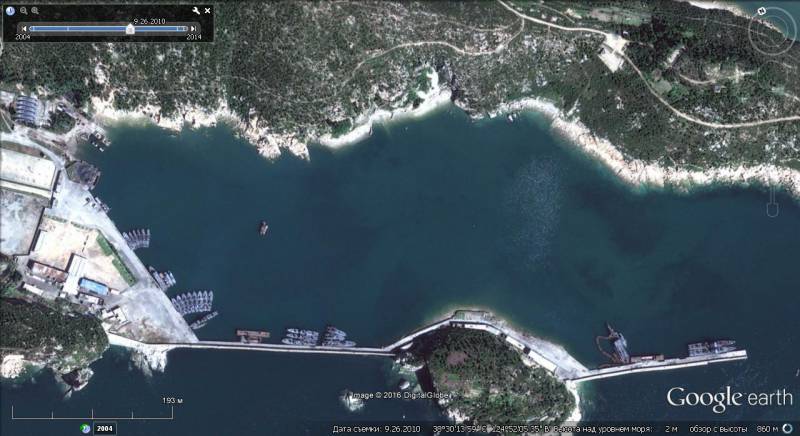
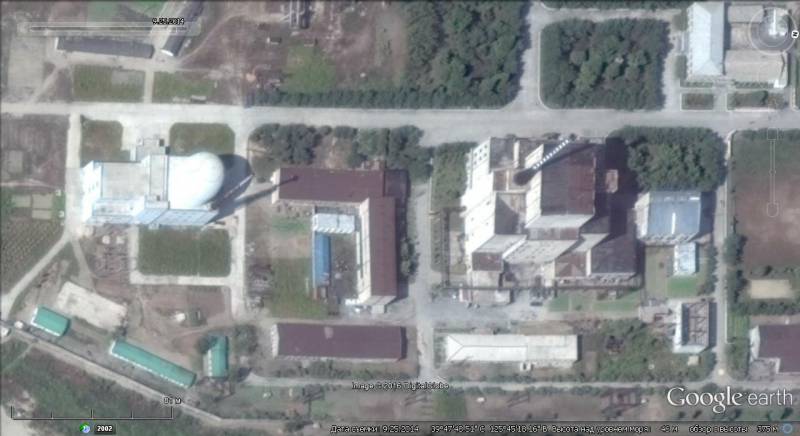
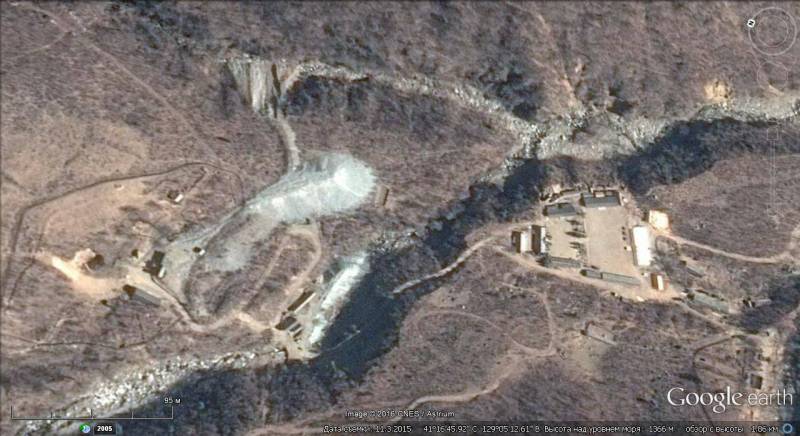
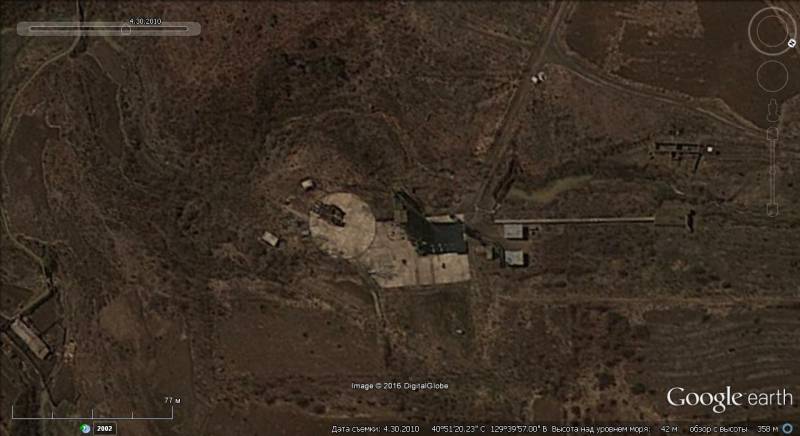
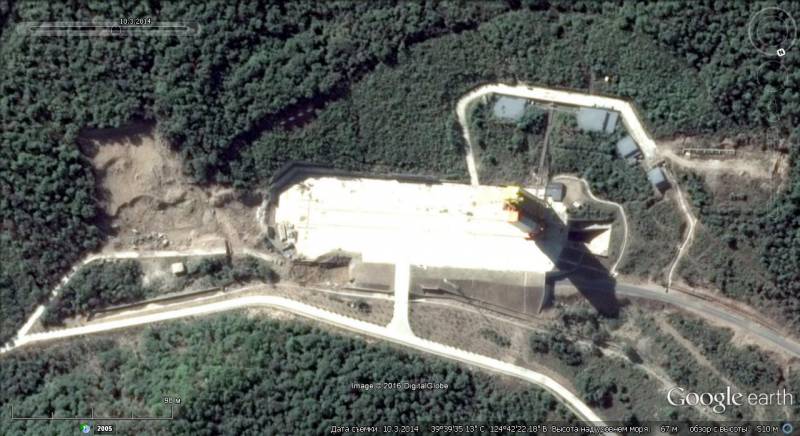
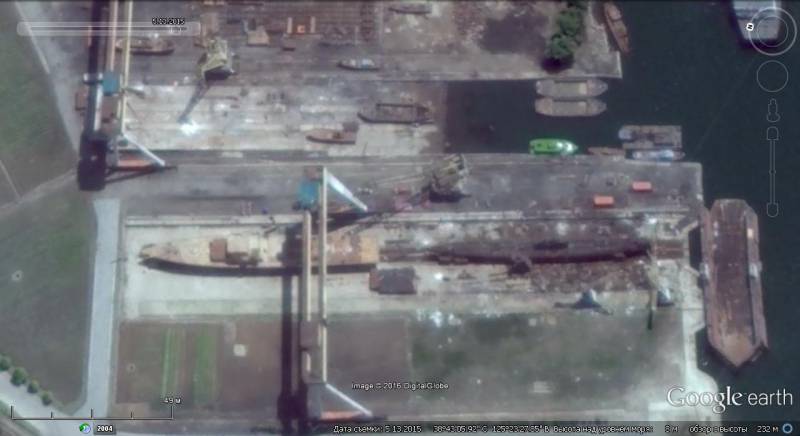
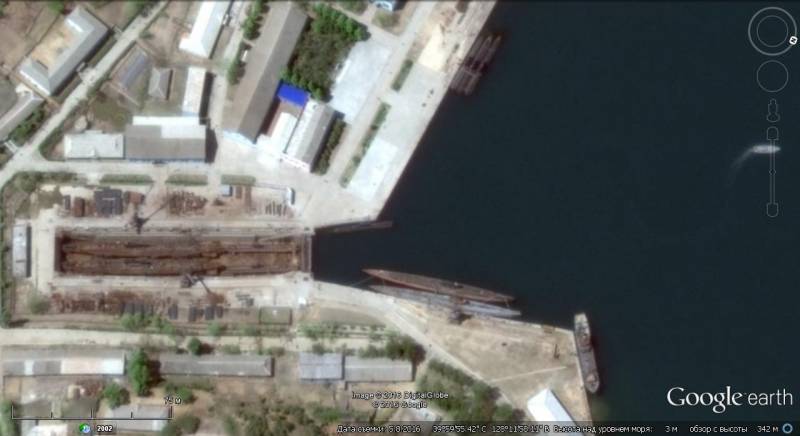
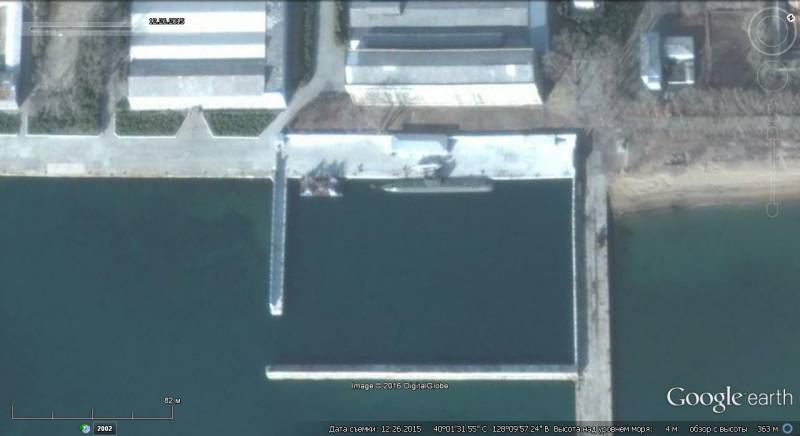
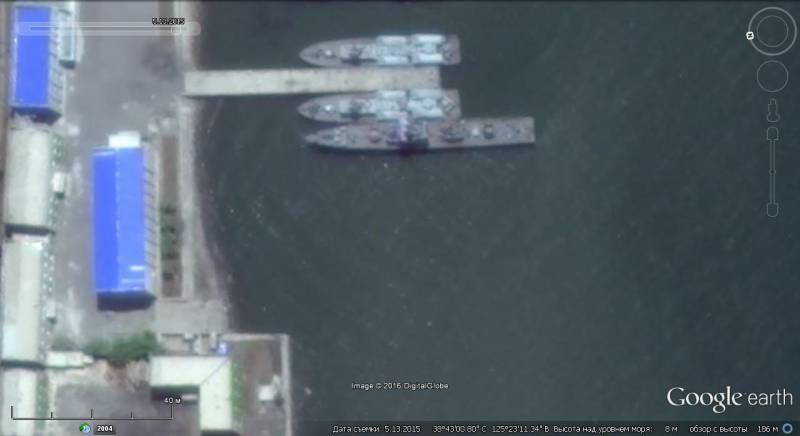
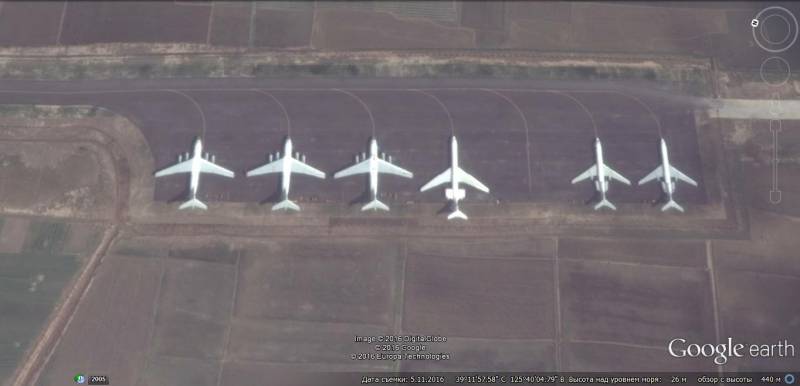
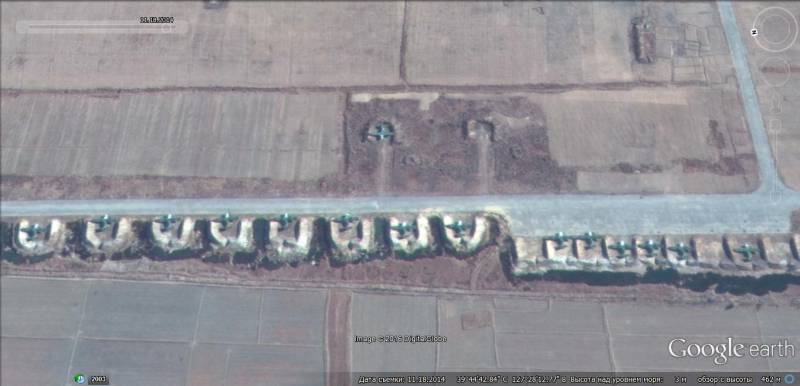
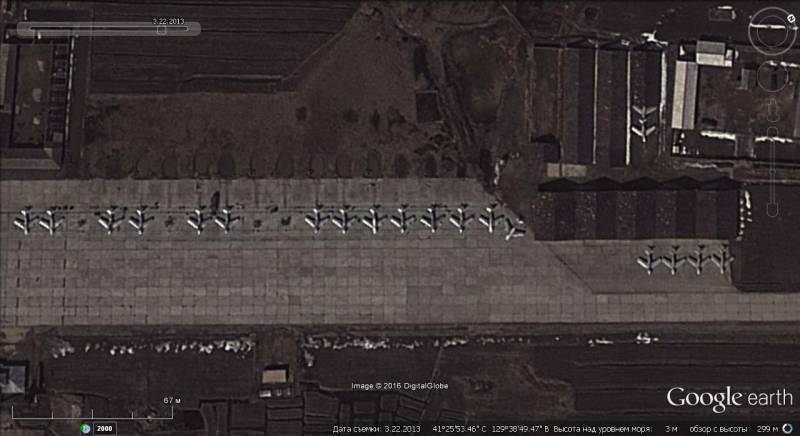
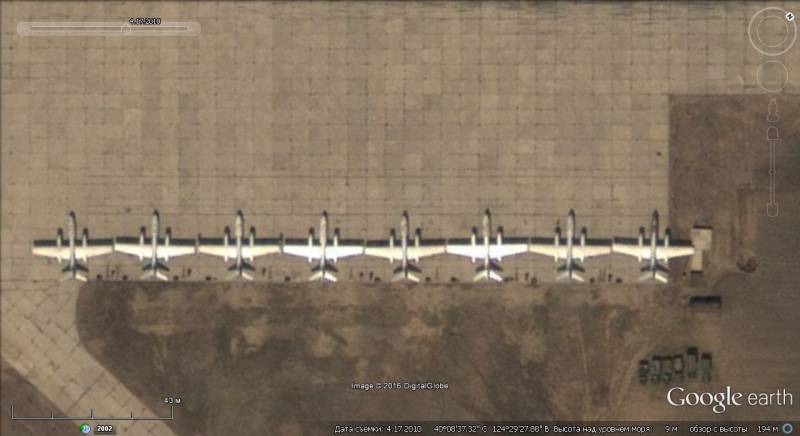
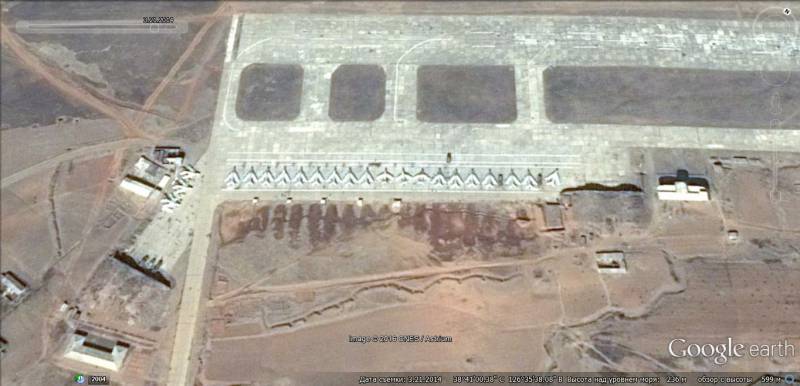
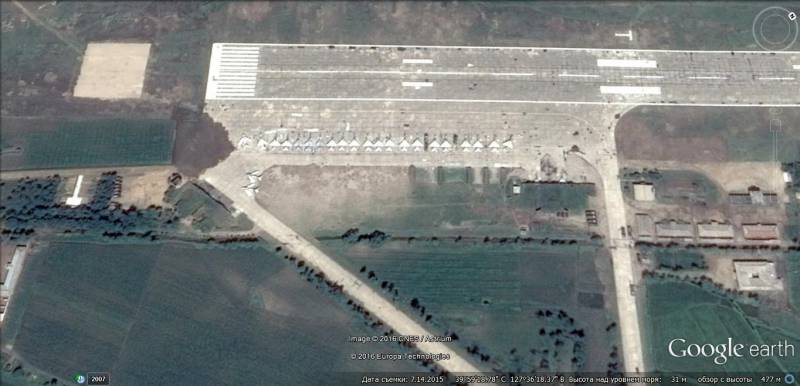
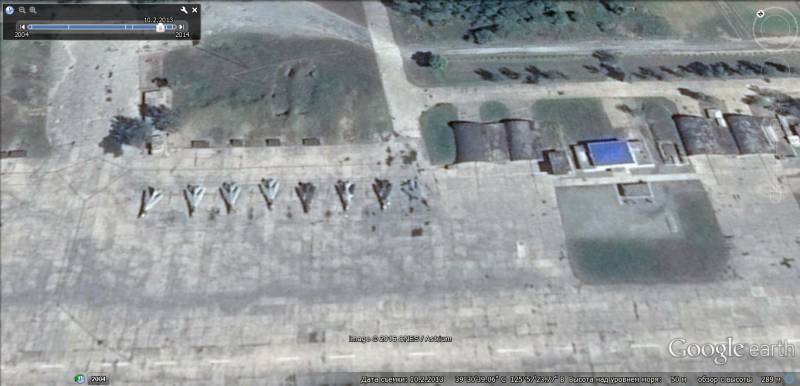
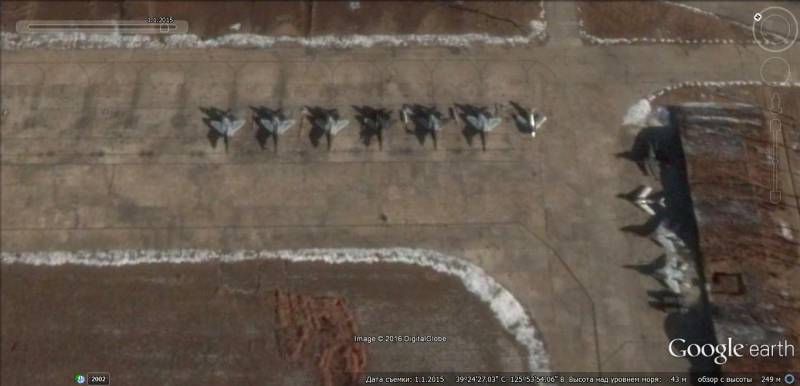
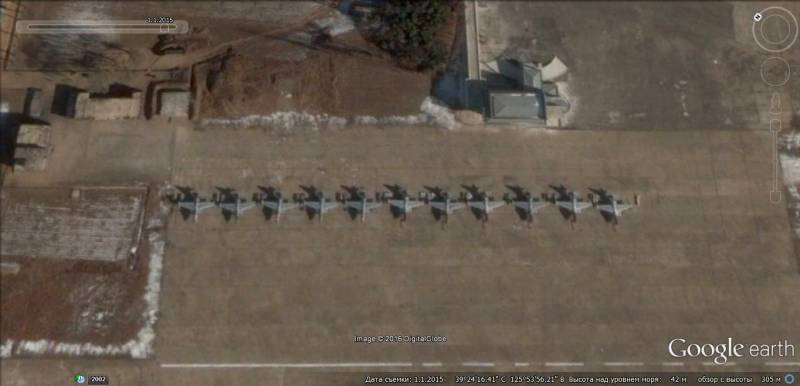
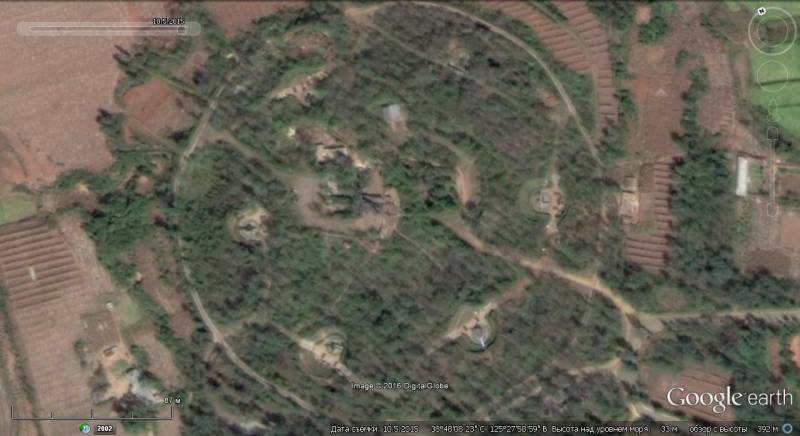
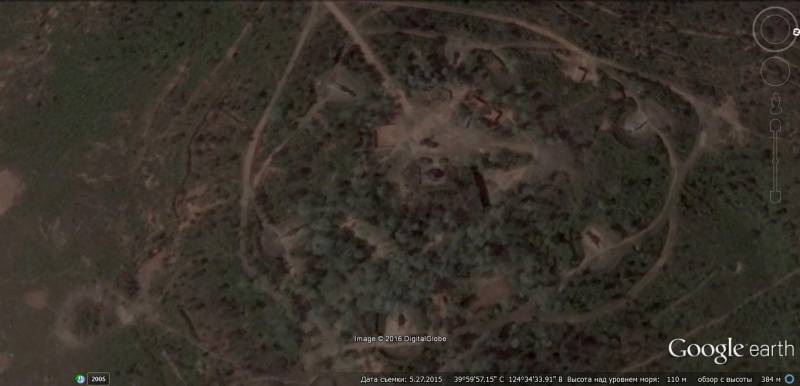
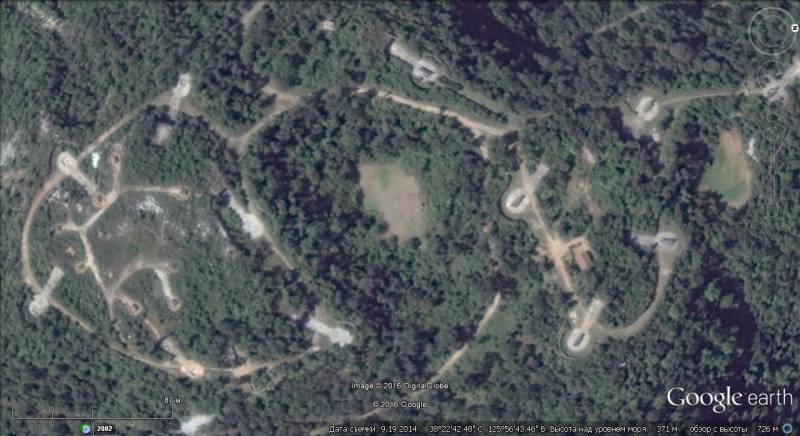
Information